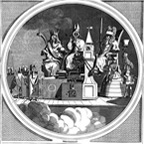Abstract[It]: Le isole Åland si trovano nell’alto nord nel mar Baltico tra la Svezia e la Finlandia e contano 30.000 abitanti. L’Alto Adige-Südtirol si trova sul versante meridionale delle Alpi, con oltre 500.000 abitanti. Entrambe le aree sembrano avere poco in comune. In realtà, però, sono unite dalla peculiarità di un’autonomia e da un destino comune. Åland è popolata da una popolazione svedese, ma è diventata parte della Finlandia dopo la Prima guerra mondiale. Il Sudtirolo fu staccato dalla madrepatria Tirolo e dall’Austria nello stesso periodo e divenne parte dell’Italia. Dopo anni difficili, hanno raggiunto uno stato di autonomia, apprezzato come un modello per la soluzione dei problemi delle minoranze. Questo studio comparativo analizza la portata di queste autonomie, i loro punti di forza e di debolezza.
Abstract[En]: Åland is a group of islands located in the northern hemisphere in the Baltic Sea between Sweden and Finland with only 30,000 inhabitants. South Tyrol lies on the southern slope of the Alps and has over 500,000 inhabitants. At first sight, the areas seem to have little in common; however, they are united by the peculiarity of autonomy and a similarly fateful history. Åland has a Swedish population but became part of Finland after the First World War. South Tyrol was detached from its motherland Tyrol and Austria during the same period and became part of Italy. After difficult years, they acquired autonomy, which is often praised as a model for the solution of minority issues. This comparative study will analyze the extent of these autonomies and their strengths and weaknesses.
Scarica il testo in formato PDF
SOMMARIO: Introduction. – 2. Analogous Fate and Anchoring of Autonomies. – 2.1. The fate of Åland and its annexation to Finland. – 2.2. Analogous course in South Tyrol until its annexation to Italy. – 2.3. The international anchoring of Åland autonomy. – 2.4. The international anchoring of South Tyrol autonomy. – 3. Autonomies in the Finnish and Italian Constitutions. – 3.1. Åland’s autonomy in the Finnish Constitution. – 3.2. Equality of languages directly in the Finnish Constitution. – 3.3. South Tyrol’s autonomy in the Italian Constitution. – 4. The Statutes of Autonomy: Structure and amendment procedure. – 4.1. Structure and name of the Åland Islands Statute of Autonomy. – 4.2. Structure and name of the Statute of Autonomy for Trentino South Tyrol. – 4.3. Legislative procedure for amendments to the Statutes of Autonomy. – 4.4. The Competence-Competence and the Agreement. – 5. Relations between Autonomy and the State. – 5.1. Governor and Government Commissioner. – 5.2. Åland Delegation and Joint Commissions. – 5.3. Representation in the State Parliament. – 6. The International Framework and the European Union. – 6.1. Neutrality and demilitarization. – 6.2. International participation and EU protection rules for Åland. – 6.3. No protection standard against EU regulations for South Tyrol. – 7. Safeguard measures and language regime. – 7.1. The right of residence, Voting Rights and Measures against Excessive Alienation. – 7.2. The position of languages. – 8. Autonomous legislation and administration. – 8.1. Legislative competences. – 8.2. Tab. Comparison of the competencies of the autonomous legislation of Åland with those of South Tyrol. – 8.3. The quality of competences. – 8.4. Competences in the administrative sphere. – 8.5. Legislative control. – 9. Conclusions.






